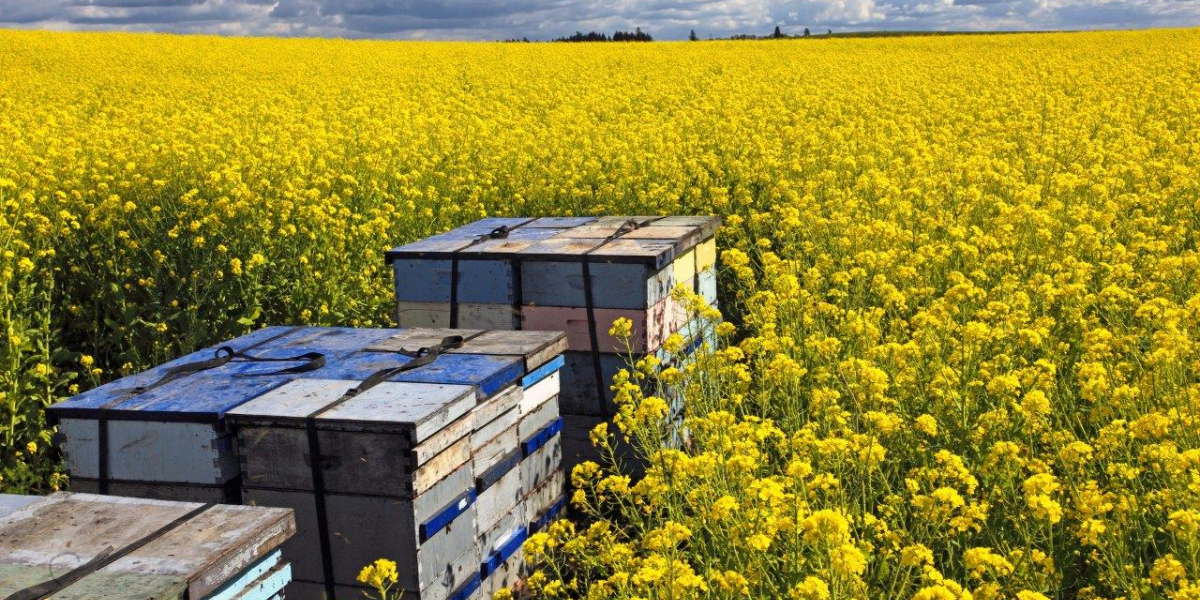
August 10, 2017
Guest Post By Andrew Kadykalo
Canadians have a good understanding of how the natural resources we use (like timber, oil and water) underpin our economy, but we understand less about the economic contributions of ecosystems. Nature also provides non-marketed ecosystem services which contribute indirectly to economic productivity and human welfare. Through our Linking Natural Capital & Productivity project, we’ve been exploring how to reflect the production of pollution in the measurement of productivity. But what about how ecosystems underpin our economic productivity? Understanding – and even estimating – the contribution of ecosystem services can lead to better public policy, ecosystem management, and decision-making. So let’s look at a few Canadian examples of nature’s contribution to productivity:
The Birds & The Bees: The Contribution of Pollinators to Agricultural Productivity
Canadian crop production is dependent on the wind, birds and insects−especially bees−for pollination. More than 70% of the leading global food crops, accounting for 35% of food production, are dependent on animal pollination to some degree. The economic value of the world’s pollination services provided by insects alone is estimated to be equivalent to CDN $101.7 billion. Farmers who recognize the contribution of animal pollinators to agricultural productivity can implement practices which enhance animal-mediated pollination services. New research suggests that preserving forest fragments and other natural habitats adjacent to agricultural fields can enhance agricultural productivity significantly due to visits from more abundant and diverse pollinator communities. For example, canola seed production (yield and profit) near La Crete, Alberta was found to be maximized when 30% of the landscape was left uncultivated within 750 metres of field edges.
Wetlands: The Contribution of Wetlands to Downstream Productivity
Globally, wetlands are one of the scarcest ecosystems yet they deliver approximately fifteen percent of the world’s ecosystem services. Wetlands generally improve water quantity and quality through groundwater recharge, water purification, and nutrient cycling – and in the process, wetlands increase productivity of downstream agricultural lands by providing water and nutrients. Wetlands also provide economic tourism values related to excursions and equipment for wildlife-watching, hunting and fishing. Per hectare, wetlands deliver approximately CDN $17-32 for water quality, $15 for water quantity, $41 for materials, $23 for fuelwood, $19-58 for recreational fisheries, $20 for commercial fisheries, $14-63 for waterfowl and bird hunting and $23 for bird watching.
Trees: The Contribution of Woodlands and Forests
Forests play a vital role in Canada’s economic health, with the forest products industry accounting for some 297,000 direct and indirect jobs. In addition to timber and other forest products, woodlands and forests deliver ecosystem services that can increase economic productivity. Forest stocks that cycle nutrients, filter water, and decompose organic matter into soils increase productivity for timber, biomass fuel and crop production. As the largest source of above-ground biomass on earth, forests play a critical role in the carbon cycle. Canada’s boreal forest for example, is an enormous terrestrial carbon sink, storing billions of tons of carbon. Forests and their soils can be an essential partner against rising emissions and can help to slow climate change.
More subtly, forests provide soil stabilization and erosion control and reduce runoff that would otherwise require costly construction of detention ponds. Forests provide habitat for key biological control agents (specifically birds, bats, parasitoids, insect predators and fungi) that control pest insects and invasive plant species that can damage forests and agricultural vegetation and can cause other health and economic harm to humans. Near Montreal, Quebec, for example, insect pest regulation in agriculture was maximized when fields were adjacent to forest fragments, while in Nova Scotia, carabid beetle communities found near forest edges have been found to provide biological control of several insect pests in wild blueberry fields. Replacing some of these forest pest control services with chemical pesticides is estimated to cost CDN $23 per hectare.
Recognizing and estimating the many contributions of nature to economic productivity should be considered in any policy design. Doing so can help inform decision-making and in many cases it can identify win-win scenarios where conserving nature will also lead to increased and maximized economic returns.
If you’d like to know more about our Linking Natural Capital and Productivity project, check it out here. And to learn more about ecosystems, check out the new Canadian Ecosystem Services Toolkit.
About the Author – Andrew Kadykalo is a M.Sc. candidate in Environmental Sustainability at the University of Ottawa and research assistant at Smart Prosperity Institute. In collaboration with the Natural Capital Project and the Nature Conservancy, his Masters research focuses on the trade-offs and synergies between agricultural productivity and ecosystem services. With degrees in both business and biology, Andrew has a unique perspective and has published his research in academic journals and has contributed to Canada’s recently published technical guide to ecosystem services assessment and analysis for managers and analysts. This fall he will begin a PhD in Biology at Carleton University, researching the human dimensions of recreational fisheries management in B.C.